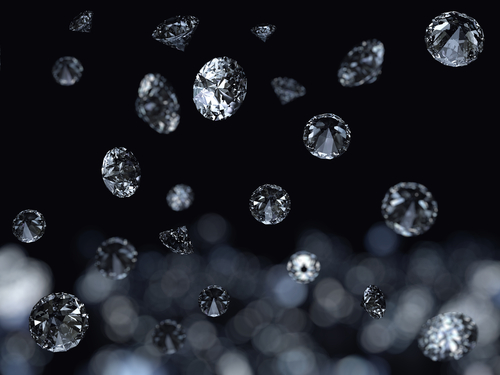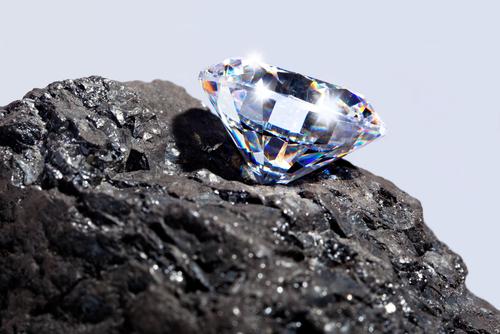The perfect diamond is desireable, eye-catching, and notoriously hard to find. If you are on the hunt for a flawless new diamond ring, pendant, or bracelet, keep the following guide in mind as you shop:

The 4 C’s
Every diamond is valued by four basic categories: clarity, color, carat, and cut. Known as the “4 C’s,” these standards determine the intrinsic value and desirability of any given gem. Although other factors certainly come into play in the complex world of diamond appraisal, once you know your “4 C’s,” you will have the groundwork you need to distinguish a stunning, brilliant diamond, from a lackluster, low-value one.
Clarity
“Clarity” refers to the number of imperfections visible within a diamond. Imperfections most often appear as black carbon spots, glass-like fractures, and internal cloudiness. The fewer imperfections visible, the more valuable and desirable the stone. Imperfections are graded from FL (flawless) to I3 (imperfect). While an imperfect stone has imperfections that are visible even to the naked eye, a flawless stone demonstrates no faults, even under 10X magnification. If you are shopping for an affordable, yet aesthetically appealing diamond, try sticking within the SI 1- SI 2 range (slightly included). While these gems have inclusions that are distinctly visible under magnification, they often look just fine to the naked eye.
 Color
ColorAlthough diamonds come in many “fancy” colors, in traditional white diamonds, color is considered an undesirable trait. Color is rated from “D” to “Z,” with most reputable jewelers primarily selling stones than fall between “D” and “M” on the color scale. The further down on the color scale a particular diamond falls, the more yellow it has in it. Since yellow coloring is considered unattractive in white diamonds, low-scale color can significantly lessen the value of even an internally flawless stone. As you decide how important color is to you in your diamond selection, keep in mind the metal of your jewelry setting. Yellow gold, for example, is particularly forgiving, making even “J” diamonds appear mostly colorless. In contrast, platinum and white gold are more likely to accentuate yellow undertones.
Carat Weight
Carat weight indicates a diamond’s size. If carat is important to you, then your search for the perfect diamond just became a little more challenging. High-carat diamonds that rate highly for clarity, cut, and color are relatively rare, and all the more expensive for that rarity. If you are shopping for someone else (for an engagement ring, for example), be sure to find out how your partner feels about carat versus quality. If you want to surprise your partner, it’s generally safe to choose a high-quality diamond measuring between ½ carat and 1 carat.
Cut
Diamond cut is measured by how well a diamond reflects the light around it. Graded from “excellent” to “poor,” cut can have a huge impact on how appealing your diamond appears. An excellent diamond, for example, reflects all of the light around it, sparkling attractively under sunlight and fluorescent lighting alike. In contrast, a “poor” cut diamond will always appear just a little dull.
Congratulations! Now that you know your 4 C’s, you are well on your way towards finding the perfect diamond. As you shop, remember that other factors do come into play as well. The shape of your diamond, for example, is all about personal preference, so be sure to compare and contrast a variety of different shapes and styles before settling on a favorite

